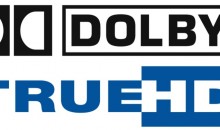What is Dolby Digital Plus?
Dolby has put out a few new surround formats since Dolby Pro Logic, but Dolby Digital Plus (also called Enhanced AC-3 or E-AC-3) might be one of the most misunderstood. Dolby Digital Plus was created to solve the issue of limited bandwidth in a world where surround sound was expanding, but HDMI and other technologies were quickly taking up all available bandwidth in cabling and transmission technologies. As HDMI started supporting more and more resolution (adding 3D capabilities, audio return channel, and networking support, the bandwidth left for surround sound was problematic in some scenarios. Add to that the growing presence of mobile devices and smart Internet tablets, and you have a growing need for a surround sound format that won’t “break the bank” when it comes to bandwidth.
Dolby Digital Plus was perfect for both home theaters as well as the world of PCs, mobile phones, and online streaming. It gave an option to have high-fidelity audio without the high bandwidth requirements of some of the lossless surround formats.
Dolby Digital Plus is based on the original Dolby Digital (AC-3), but it allows for streaming media to present surround sound even with limited bandwidth. That means fewer dropouts and more options for 5.1 delivery. The problem is, many users are accessing more and more of this streaming media on network devices like Blu-ray players and connected “smart” televisions.
Dolby Digital Plus and Industry Adoption
That’s changing the paradigm. Back in 2010, Netflix announced that it would be streaming Dolby Digital Plus with its HD streaming content. Around the same time, VUDU also announced it would be using Dolby Digital Plus streaming for its movies (in fact, they announced 7.1 support a year later). That was a boon for home theater owners streaming the service through connected Blu-ray players, televisions, and gaming systems.
And what’s really exciting is that Dolby Digital Plus is completely backward-compatible with Dolby Digital. So older AV receivers can still get 5.1 surround from an encoded Dolby Digital Plus streaming source, provided it gets the audio via its digital coax or digital optical input. For modern AV receivers and televisions, anything with HDMI 1.3 or higher connections will decode Dolby Digital Plus just fine.
Some of the Technical Features of Dolby Digital Plus:
- 1.0 to 7.1 channels of surround sound
- 5.1-channel interactive experience for Blu-ray BonusView and BD-Live
- 7.1-channel support for primary Blu-ray soundtracks
- Backwards-compatibility with Dolby Digital
- Dialogue Enhancer
- Surround Virtualizer creates a surround sound experience through headphones or built-in speakers
- Volume Leveler for eliminating volume jumps across platforms
- Dolby Digital pass-through allows multichannel audio from mobile devices (even if they don’t support surround)
- 20-bit/48kHz sample rate
- Data (Blu-ray): 768kbps-1.5 Mbps
- Data (legacy): 640kbps Dolby Digital
- Data (streaming/broadcast): 256kbps
How Mobile Devices Can Benefit from Dolby Digital Plus
Dolby Digital Plus on mobile devices is exciting for a couple of reasons. One, it allows for virtual surround using the integrated technologies present in the steam. Also, Dolby Digital Plus can be passed through a mobile device to an AV receiver for true 5.1 surround—even if the mobile device itself cannot support multi-channel playback. This embedded technology is one way in which this surround format has the capability to enrich streaming media well beyond the typical restraints of stereo video channels.
Conclusion
If you have an AV receiver with HDMI 1.3 or later, you’ve already got support for Dolby Digital Plus. Make sure any devices you are streaming through your home theater system are configured with either HDMI output or, at the least, digital coax or optical connections. That way, you can enjoy 5.1 and even 7.1 surround from your streaming movies, including Netflix and VUDU to name a couple. If you have a new AV receiver you’ll likely want to stream the lossless audio from Blu-ray players, but if your receiver is older, rest assured that you can at the very least get Dolby Digital 5.1 decoded from the latest movies and television shows.
Are you streaming content with Dolby Digital Plus? Why or why not? Leave us a comment on our Facebook page or drop a comment below this article with your opinion.







Is a digital compression scheme
Hi, am using LENOVO S8-50LC TABLET and it’s got Dolby digital plus,,, but,,, whenever I tried the custom equaliser settings to adjust as I want they simply falling down to 12db,,,, so can you help me out about what’s the problem and how to achieve it,,,, I think everyone are facing same problem but can’t find the fix at lenovo / Dolby